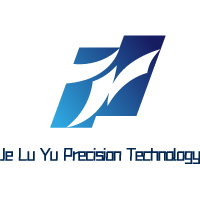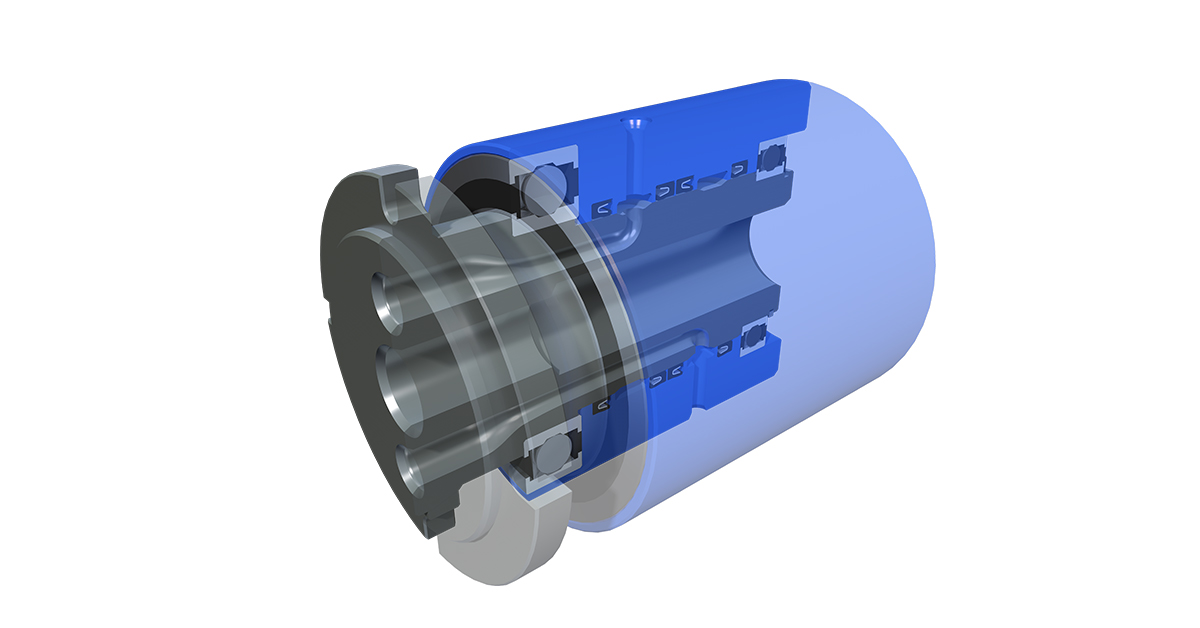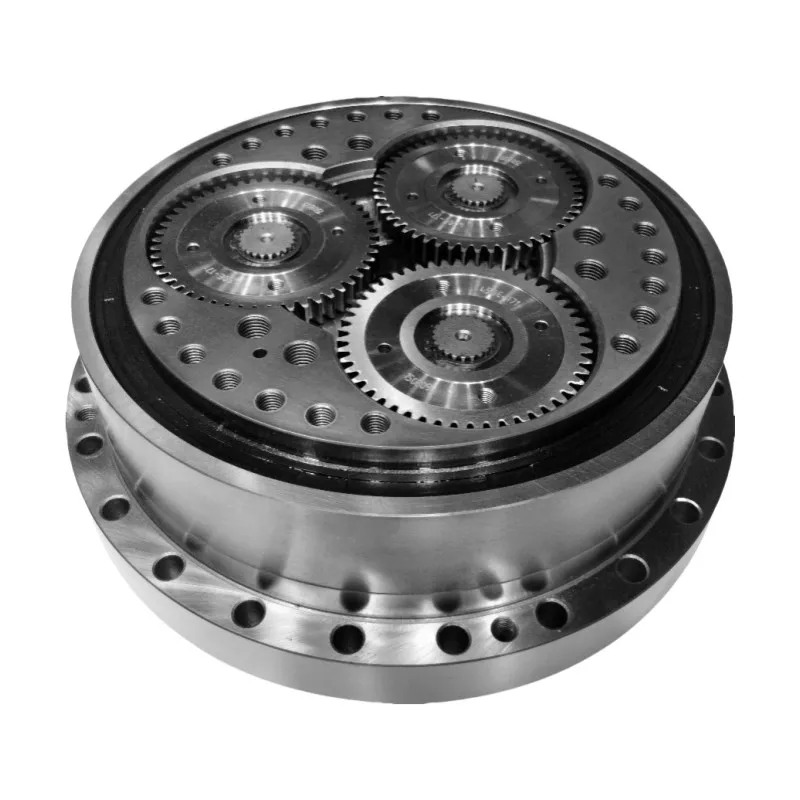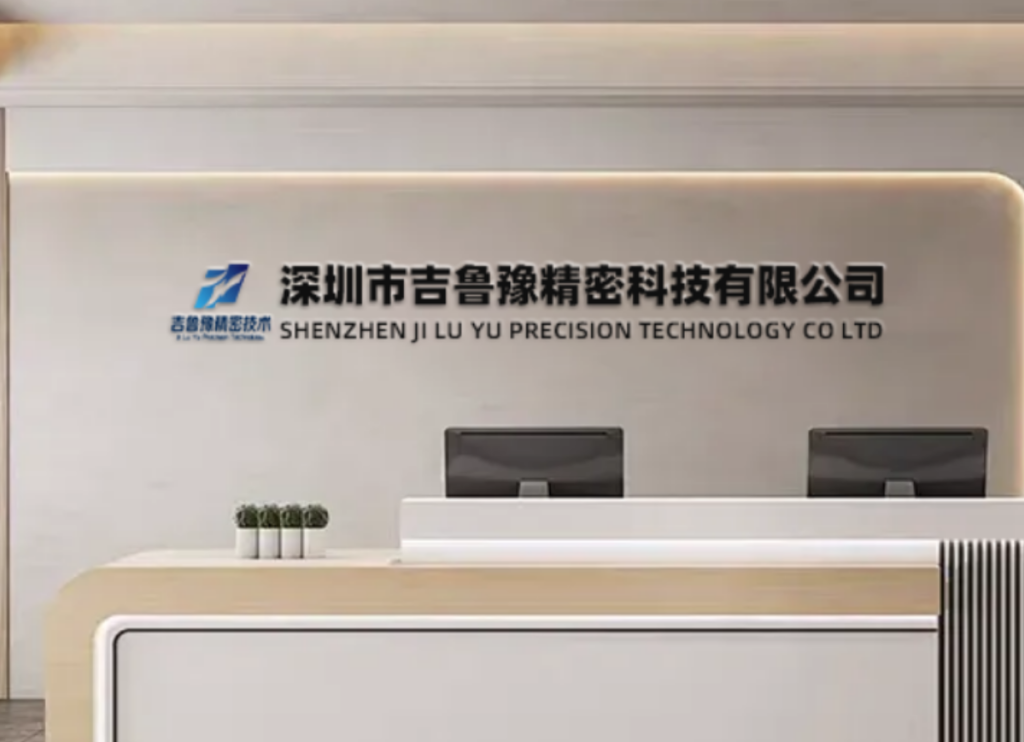7 Advanced Benefits of Helical Gear Robotic Arm Technology in Modern Automation
Introduction: Revolutionizing Robotic Motion with Helical Gearing
In the sophisticated landscape of industrial robotics, motion quality and operational excellence separate exceptional systems from merely adequate ones. The helical gear robotic arm represents a significant evolution in power transmission technology, offering superior performance characteristics that directly address the demanding requirements of modern automated systems. Unlike their spur gear counterparts, helical gears introduce angular tooth engagement that transforms the fundamental dynamics of robotic motion, enabling smoother operation, higher load capacity, and enhanced positional accuracy.
As precision engineering specialists at JLYPT, we have mastered the intricate manufacturing processes required to produce high-performance helical gear robotic arm components. This comprehensive technical analysis explores seven fundamental advantages that establish helical gearing as the premium choice for advanced robotic applications, while examining the sophisticated manufacturing methodologies that ensure optimal performance in the most challenging industrial environments.
1. Fundamental Principles of Helical Gear Robotic Arm Technology
1.1 The Angular Engagement Advantage
Helical gear robotic arm systems operate on an advanced mechanical principle where teeth are cut at an angle to the gear axis, creating a gradual engagement process that fundamentally differs from conventional spur gearing. This angular approach, characterized by the helix angle, delivers significant mechanical advantages that directly benefit robotic applications:
-
Progressive Tooth Engagement: Multiple teeth remain in contact throughout the engagement cycle, ensuring continuous load distribution
-
Axial Force Component: The helix angle generates controlled axial forces that can be managed through precision bearing selection
-
Superior Load Distribution: The angled tooth contact spreads forces across broader surface areas, reducing stress concentrations
The mathematical foundation of helical gear robotic arm systems begins with understanding key geometric parameters:
Helix Angle (ψ) = tan⁻¹ (π × Module / Lead)
This fundamental relationship dictates the gear’s performance characteristics, with typical helix angles for robotic applications ranging from 15° to 30°. The selection of optimal helix angles represents a critical design decision that balances torque capacity, efficiency, and axial thrust considerations.
1.2 Historical Development and Technical Evolution
The journey of helical gear robotic arm technology spans more than a century of mechanical innovation:
Early Development (1900-1950):
Initial helical gear applications emerged in automotive transmissions and industrial machinery, where smoother operation justified increased manufacturing complexity. Early manufacturing limitations restricted widespread adoption in precision applications.
Precision Era (1950-1990):
Advancements in gear cutting technology, particularly the development of CNC hobbing machines, enabled mass production of precision helical components. The aerospace and defense industries drove significant improvements in accuracy and reliability.
Robotics Integration (1990-2010):
The robotics revolution created new demands for high-performance gearing solutions. Helical gear robotic arm systems gained prominence in applications requiring smooth motion and precise positioning, particularly in semiconductor manufacturing and precision assembly.
Modern Optimization (2010-Present):
Contemporary helical gear robotic arm systems benefit from advanced materials, computer-optimized tooth profiles, and micro-geometry modifications that maximize performance for specific robotic applications.
2. Critical Advantages of Helical Gear Robotic Arm Systems
2.1 Superior Operational Smoothness and Noise Reduction
The most immediately noticeable advantage of helical gear robotic arm systems is their exceptionally smooth and quiet operation. This characteristic stems from the gradual tooth engagement process that eliminates the abrupt contact characteristic of spur gears.
Acoustic Performance Analysis:
In precision-manufactured helical gear robotic arm components, noise reduction typically measures 8-15 dB compared to equivalent spur gear systems. This significant improvement results from:
-
Continuous Line Contact: The angled teeth maintain continuous contact lines that distribute loads smoothly
-
Reduced Impact Forces: Gradual engagement minimizes tooth-to-tooth impact during meshing
-
Vibration Damping: The helical configuration provides inherent damping characteristics
-
Optimized Surface Finish: Precision grinding achieves surface roughness below Ra 0.3μm
The exceptional acoustic performance proves particularly valuable in applications including:
-
Human-collaborative robotics
-
Laboratory and medical automation
-
Office and residential robotics
-
High-speed packaging machinery
2.2 Enhanced Load Capacity and Durability
Helical gear robotic arm systems deliver substantially higher load-carrying capacity compared to equivalent-sized spur gears. The increased number of teeth in contact and favorable contact geometry enable remarkable performance in demanding applications.
Comparative Load Capacity Analysis:
| Performance Metric | Helical Gear Robotic Arm | Spur Gear Robotic Arm | Improvement |
|---|---|---|---|
| Surface Durability | 150-200% | 100% | +50-100% |
| Bending Strength | 130-160% | 100% | +30-60% |
| Contact Ratio | 2.0-3.5 | 1.4-1.8 | +40-90% |
| Fatigue Life | 200-300% | 100% | +100-200% |
| Overload Capacity | 180-250% | 100% | +80-150% |
The data demonstrates that helical gear robotic arm systems typically provide 30-100% higher load capacity across critical performance metrics, enabling more compact designs with equivalent performance or enhanced capability in existing form factors.
2.3 Improved Efficiency and Power Density
The optimized contact mechanics of helical gear robotic arm systems translate directly into superior efficiency and power transmission capability. Under optimal conditions, well-manufactured helical gears achieve efficiency ratings of 98-99% per mesh, with high-precision units approaching 99.5%.
Efficiency Optimization Factors:
-
Reduced Sliding Friction: Optimized helix angles minimize sliding components in tooth engagement
-
Superior Lubrication Retention: The helical geometry maintains more effective lubricant films
-
Thermal Management: Even load distribution reduces localized heating
-
Precision Manufacturing: CNC machining maintains tight tolerances for optimal meshing
3. Advanced CNC Manufacturing Techniques for Helical Gear Robotics
3.1 Precision Gear Cutting Technologies
The manufacturing of high-performance helical gear robotic arm components demands sophisticated machining approaches to achieve the required accuracy and surface finish while maintaining precise helix angle control.
CNC Gear Hobbing Process:
Modern CNC hobbing represents the primary manufacturing method for high-quality helical gear robotic arm components:
-
Simultaneous 5-Axis Control: Advanced hobbing machines synchronize rotary and linear axes while maintaining precise helix angle relationships
-
Variable Helix Hobbing: Specialized hob geometry optimized for specific helix angles and module sizes
-
Adaptive Cutting Technology: Real-time parameter adjustment maintains consistent quality throughout the tool life
-
Integrated Metrology: On-machine measurement systems verify critical dimensions during production
Gear Grinding for High-Precision Applications:
For hardened helical gear robotic arm components, precision grinding achieves final dimensions and superior surface characteristics:
-
CNC Profile Grinding: Precisely dressed grinding wheels replicate optimized tooth profiles
-
Continuous Generating Grinding: High-precision worm-shaped grinding wheels create perfect helical geometry
-
Multi-Axis Grinding Centers: Advanced machines maintain angular relationships within arc-second accuracy
Critical Quality Parameters:
-
Tooth profile accuracy: AGMA Class 12-13
-
Helix angle deviation: ±0.01° maximum
-
Pitch deviation: ±0.003mm maximum
-
Surface finish: Ra 0.2-0.4μm ground
3.2 Material Selection and Heat Treatment Strategies
Advanced Material Selection Guide:
| Material Grade | Applications | Heat Treatment | Core Hardness | Surface Hardness |
|---|---|---|---|---|
| 20MnCr5 | High-load robotic arms | Carburizing | 30-38 HRC | 58-63 HRC |
| 42CrMo4 | General industrial robotics | Through-hardening | 32-40 HRC | 32-40 HRC |
| 16MnCr5 | Precision positioning arms | Case carburizing | 28-35 HRC | 58-62 HRC |
| 31CrMoV9 | High-temperature applications | Nitriding | 38-45 HRC | 800-1100 HV |
| 17-4PH | Corrosive environments | Precipitation hardening | 40-48 HRC | 40-48 HRC |
Precision Heat Treatment Processes:
The thermal processing of helical gear robotic arm components requires exceptional control to achieve optimal mechanical properties while minimizing distortion:
Carburizing for Maximum Durability:
-
Atmosphere control within ±0.05% carbon potential
-
Precise temperature uniformity within ±5°C
-
High-pressure gas quenching for minimal distortion
-
Deep cryogenic treatment for dimensional stability
Nitriding for Precision Applications:
-
Plasma nitriding for precise case depth control
-
Temperature uniformity within ±3°C
-
White layer control below 5μm
-
Minimal distortion for near-net-shape components
4. Design Optimization for Robotic Applications
4.1 Helix Angle Optimization
The selection of optimal helix angles represents a critical design decision for helical gear robotic arm systems:
Standard Helix Angles:
-
15°-20°: Balanced performance with manageable axial thrust
-
20°-25°: Enhanced smoothness with increased axial loads
-
25°-30°: Maximum smoothness requiring sophisticated thrust management
Advanced Considerations:
-
Dual Helix Designs: Herringbone arrangements eliminate net axial thrust
-
Variable Helix Angles: Progressive angles optimize performance across operating range
-
Asymmetric Profiles: Different pressure angles for drive and coast sides
4.2 Micro-Geometry Modifications
Strategic tooth modifications optimize helical gear robotic arm performance:
Profile Modifications:
-
Tip Relief: Controlled material removal prevents interference during engagement
-
Root Relief: Strategic clearance reduces stress concentration
-
Profile Crowning: Compensates for misalignment and bending under load
Lead Modifications:
-
End Relief: Tapered tooth ends compensate for bending under load
-
Lead Crowning: Barrel-shaped tooth profile accommodates misalignments
-
Bias Modification: Asymmetric corrections for specific loading conditions
5. Quality Assurance and Testing Protocols
5.1 Comprehensive Metrology Systems
The verification of helical gear robotic arm components employs advanced measurement technologies:
Gear Measurement Centers:
-
Complete 3D tooth geometry analysis
-
Helix angle measurement with 0.001° resolution
-
Profile, lead, and pitch measurement
-
Surface finish quantification to Ra 0.01μm
Coordinate Measuring Machines:
-
Gear blank dimension verification
-
Bore geometry and alignment measurement
-
Feature location accuracy validation
-
Assembly relationship verification
5.2 Performance Validation Testing
Helical gear robotic arm assemblies undergo rigorous performance testing:
Efficiency Testing:
-
Input-output power measurement with ±0.1% accuracy
-
Torque-speed characterization across operating range
-
Thermal performance mapping
-
Lubrication system validation
Durability Testing:
-
Accelerated life testing with 200% overload conditions
-
Continuous operation monitoring for performance degradation
-
Environmental condition testing
-
Maintenance interval validation
6. Application Case Studies
Case Study 1: Automotive Painting Robot
Challenge: An automotive manufacturer required ultra-smooth gearing for painting robots where vibration-free operation directly impacted finish quality. The existing spur gear systems produced visible patterning in painted surfaces.
JLYPT Solution: We developed custom helical gear robotic arm components using 20MnCr5 steel with precision carburizing to 60 HRC surface hardness. The design incorporated 23° helix angles with optimized profile modifications. Manufacturing utilized CNC hobbing followed by precision grinding to achieve AGMA Class 12 accuracy.
Results:
-
Reduced vibration levels by 75% compared to previous systems
-
Eliminated paint patterning defects completely
-
Achieved service life of 15,000 hours between maintenance
-
Reduced operational noise from 72 dB to 61 dB
Case Study 2: Semiconductor Handling Robot
Challenge: A semiconductor equipment manufacturer needed high-speed positioning robots with exceptional accuracy and minimal particle generation for cleanroom environments.
JLYPT Solution: Our engineering team designed precision helical gear robotic arm components using 31CrMoV9 steel with plasma nitriding. The manufacturing process emphasized surface finish quality, achieving Ra 0.1μm on all tooth flanks. Special helix angle optimization ensured smooth acceleration profiles critical for precise positioning.
Results:
-
Achieved positioning accuracy of ±0.05mm at 2m/s
-
Reduced particle generation by 90% through improved surface finishes
-
Maintained consistent performance through 20,000 hours of operation
-
Enabled 25% faster cycle times through higher acceleration capabilities
Case Study 3: Heavy Payload Material Handling
Challenge: A logistics automation provider required robust gearing for palletizing robots handling loads up to 800kg with frequent start-stop cycles.
JLYPT Solution: We implemented heavy-duty helical gear robotic arm components using 42CrMo4 steel with through-hardening to 38 HRC. The design incorporated 18° helix angles with increased face width for higher load capacity. Precision grinding after heat treatment maintained geometric accuracy while achieving compressive residual stresses.
Results:
-
Achieved shock load capacity of 500% rated torque
-
Maintained backlash within 0.03mm through 12,000 hours
-
Reduced maintenance requirements by 55%
-
Enabled faster cycle times through higher torque capacity
7. Future Trends and Innovations
7.1 Emerging Technologies
The evolution of helical gear robotic arm technology continues with several promising directions:
Additive Manufacturing Integration:
-
Hybrid manufacturing combining LPBF with precision machining
-
Conformal cooling channels for thermal management
-
Customized lattice structures for weight optimization
Smart Gear Systems:
-
Embedded fiber optic sensors for real-time load monitoring
-
Surface-embedded RFID for maintenance tracking
-
Self-lubricating composite materials
Advanced Materials:
-
Metal matrix composites for extreme wear resistance
-
Engineering polymers for lightweight applications
-
Nanostructured coatings for extreme environments
7.2 Digital Manufacturing Advances
The future of helical gear robotic arm manufacturing includes:
Industry 4.0 Integration:
-
IoT-enabled machine tools with real-time monitoring
-
AI-driven process optimization
-
Digital twin technology for virtual validation
Sustainable Manufacturing:
-
Minimum quantity lubrication (MQL) technologies
-
Recyclable material systems
-
Energy-efficient manufacturing processes
Conclusion: The Superior Choice for Advanced Robotics
Helical gear robotic arm technology represents the pinnacle of power transmission engineering for demanding automated applications. The seven advantages explored—superior smoothness, enhanced load capacity, improved efficiency, compact design, precision operation, durability, and thermal performance—establish helical gearing as the preferred solution for applications where performance cannot be compromised.
As manufacturing technologies continue to advance, the capabilities of helical gear robotic arm systems will expand further, integrating new materials, manufacturing methods, and digital technologies. The fundamental mechanical advantages of helical gearing ensure its ongoing relevance in an increasingly sophisticated automation landscape.
At JLYPT, our commitment to manufacturing excellence ensures that every helical gear robotic arm component we produce delivers optimal performance, reliability, and value. Through continuous improvement and rigorous quality assurance, we support our partners in achieving their automation objectives with advanced, high-performance mechanical solutions.
For engineering teams seeking to implement or optimize helical gear systems in robotic applications, contact JLYPT today to discuss your specific requirements and discover how our manufacturing expertise can enhance your robotic systems’ performance and reliability.








